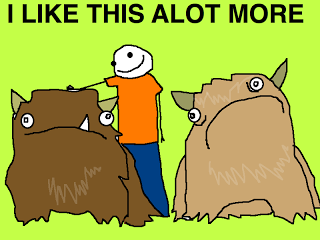If you’re selling in any proper fashion, you’re working overtime trying to get to the root problem your prospect or customer is struggling with. You’re asking substantial business and process questions. You’re inquiring about their goals and objectives and the desired outcomes. If you’re killing it, you’re trying to understand their current state and their desired future state.
However in the process of gathering information, if you’re like most salespeople you’re missing a critical step. And, in doing so, your leaving tremendous opportunity on the table.
What are you and other sales people missing? You’re not asking for definitions.
When a customer or prospect says they are losing a lot of money, rarely do we ask, “How much money are you losing?” or “Can you define a lot? When a prospect says they need to see substantial growth, we don’t ask; “How much growth are you looking for?” When a buyer says it takes a long time to do something, we rarely inquire what a “long-time” is.
Look! More, a lot, less, increase, grow, declining, additional, fewer, longer, shorter, efficient, inefficient, lighter, heavier, greater, smaller, minimize, minimal, maximum, substantial, and meager don’t mean anything without definition.
Too often sales people accept these vague, nondescript adjectives as the gospel. I’ve heard it a million times. A sales person turns to me and says their customer wants to grow faster, and that’s why they’re interested in the product. Or they explain that their customer’s sales are slowing down, and they need to get them growing faster. In neither case, however, does the rep actually learn what faster means or what slowing down means. They just accept them at face value, whatever face value is.
When we don’t define these customer descriptions, we are leaving 50% or more of the sales on the table. We deny ourselves the insight necessary to successfully sell the deal. Terms like a lot and faster, or slower are subjective even with definitions, but without definitions, they are useless.
Think about it this way. What if growing sales faster to your customer is, one year, and you think growing sales faster is three months. What if more to your prospect is 90% more, but to you it’s 10%. Those are all very different expectations and objectives.
When we ask our prospects to define their objectives, to define; more, less, faster, etc. we get the information we need to understand truly and precisely the world they’re living in and the expectations they have. It allows us to see exactly where the prospect is struggling. We see exactly what they are looking to make happen. We see exactly where the problems are, how big they are and what it’s going to take fix them. When we leave them vague, we make it impossible to solve their problems. Why, because we don’t know what they are.
Don’t settle for vague, undefined environmental descriptions. When you’re doing your discovery, ask for specifics, ask for details, ask your prospect or client to define exactly what they mean by more, less, faster, shorter, etc.
Without a definition, you have nothing. Don’t have nothing.
Get good at asking; “Can you please define . . . ?

